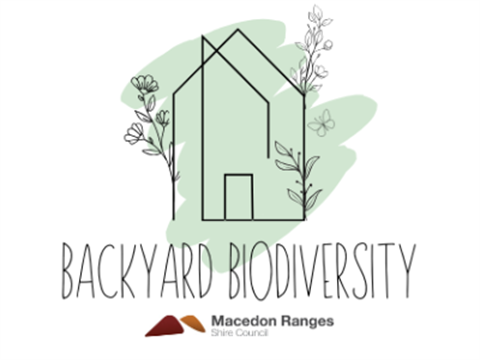Backyard Biodiversity

Do you want to discover how your backyard can make a big difference for biodiversity?
Whether you are new to gardening or already love it, the Backyard Biodiversity project will help you transform your backyard into a welcoming home for local wildlife.
Join us and learn how to:
- create habitat for native birds, insects and wildlife
- choose the right plants to support biodiversity
- make a positive impact on your local environment.
Let's grow a green future together, one backyard at a time.
Take part in our pilot project in Kyneton
If you live in Kyneton, you can apply to join our Backyard Biodiversity pilot project! Successful applications will receive:
- a free box of 10-15 plants native to your area
- expert advice from a garden designer
- knowledge to create wildlife-friendly spaces.
Is Backyard Biodiversity for you?
- Do you live in the Kyneton township? Renting? No worries - Backyard Biodiversity can be tailored to suit your needs.
- Want to attract more wildlife to your backyard?
- Have a space in your backyard you'd like to convert into a habitat?
If you answered yes...
Let's grow! Join us at our launch event on 22 March, from 1-2pm, at Kyneton Community House.
Register
Here's how it works
Apply to become part of our Kyneton pilot program. If successful, you will:
- Attend a workshop on 17 May 2025 in Kyneton to learn how to create backyard habitats.
- Book a 45-60 minute consultation with our garden designer for your personalised hand-drawn design. The design will be for a maximum space of 3x3m or 9m2.
- Pick up your box of 10-15 plants. Plants are provided once your plan has been created and specific species discussed.
- Observe with your before and after photos. Sit back and enjoy your backyard come to life with new wildlife visitors.
Applications open 22 March 2025.
What are the benefits of a native garden?
A native garden supports local wildlife by providing food, shelter, and habitat for birds, insects, and other species. It conserves water, requires less maintenance, and thrives in our climate. Native plants also promote biodiversity, improve soil health, and create beautiful, sustainable spaces that connect to the natural environment, contributing to healthier ecosystems and vibrant communities.
Why are wildlife-friendly backyards important?
Urban and suburban spaces play a critical role in supporting biodiversity and wildlife by offering habitats, resources, and ecological connectivity in areas that are often heavily modified by human activity. Here’s how your backyard can contribute:
Providing Habitat
- Parks, gardens, backyards, and community green spaces can serve as mini-ecosystems for local wildlife.
- Trees provide nesting sites, shade and food for birds, insects and animals.
- Trees, shrubs and groundcovers reduce heat in your backyard making it cooler for both us and wildlife.
Supporting Pollinators
- Flowering native plants offer nectar and pollen for bees, butterflies and other pollinators.
- Native species provide shelter in an urban environment and can include bee hotels, hollow logs or water features for insects and birds.
- Adding water sources to your backyard helps wildlife during droughts or dry spells.
Wildlife corridors
- Whilst urbanisation reduces natural habitat, backyards, courtyards and even balconies can act as stepping stones allowing animals to move between larger natural habitats.
- Neighbouring properties can create and connect wildlife corridors for many species using nest boxes, water features.
Resources
Habitat loss from urban development and climate change is making it harder for native wildlife to survive.
Climate change adds to the challenge, with more extreme temperatures and weather patterns, which affects plant growth and disrupts ecosystems.
Even small gardens can make a big difference by creating little pockets of habitat and helping to reconnect biolinks.
Our handy resources can help you provide habitat in your backyard to attract a range of insects, birds, mammals, reptiles, and frogs.
Did you know we have a range of nature guides where you can learn more about local flora, weeds, grasses, birds and insects while you are enjoying nature? Download them from the webpage straight to your phone. This will ensure access to the guides whenever, wherever you are.